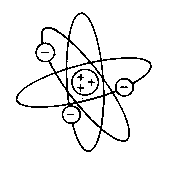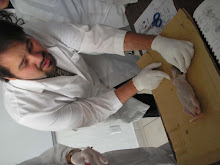Today we started talking about quantum numbers and since the beginning Mr. Ariel said that it would be confusing.
In a way they are what tells you where the electrons of a specific atom could be located.
Now there are 4 types of quantum numbers the first would be:
Principal (n):
What this one basically defines the energy levels it has and n=1,2,3, ... up to infinity, but it does HAVE to be a whole number. The bigger n the more energy it has and the farther away form the nucleus it is.
The next quantum number would be:
Angular momentum (l):
What this one does is basically give you the shape of the orbitals, it tells you what part of the energy level the electron is located in.
l=0,...,n-1
And what each number means is which orbital it has... Thinking back to last year they told us about the s, p, d, f orbitals and that's what the numbers stand for.
0=s which is just a sphere.

1=p it's often called a dumbbell
 and always comes in groups of 3.
and always comes in groups of 3.2=d it's like 2 dumbbells put together.

3=f is more complex it's like 2 d orbitals put together.

And so on each orbital has a different shape.
YOU CAN HAVE MORE THAN 1 SUB-ORBITAL
an example would be that:
if n=5
l=0,1,2,3,4 and it would have the possibility of having all s,p,d,f orbitals, but it's not always necessarily using them all.
Next is the:
Magnetic number(ml):
This one determines the orientation of the sub-orbits and how many orbitals in a set. (the way it is turned and seen, and how many possible views it has).
ml=-l, 0, +l (it's an L not a one!)
so if l=0 then ml=0 and you'll only have one view, because no matter what way the spherical orbital is turned it will always look the same.
the next one is:
Spin number (ms):
It tells you the direction the electron is spinning.
it can only be +1/2 or -1/2.
It is like the elctronic configuration and the arrows, you always start with the positive (up arrow) and then put in the negative (down arrow).
It will always be 1/2 because it's the way it is, it will NOT change.
The example he showed us was of H (hydrogen), its quantum numbers would be:
n=1
l=0
ml=0
ms=+1/2
If you still had doubts he left two links of two videos on facebook which explain it and might help you grasp it better.
The homework for Friday was the quantum numbers for the following elements Berillium, Boron, Carbon, Nitrogen and Oxygen.







